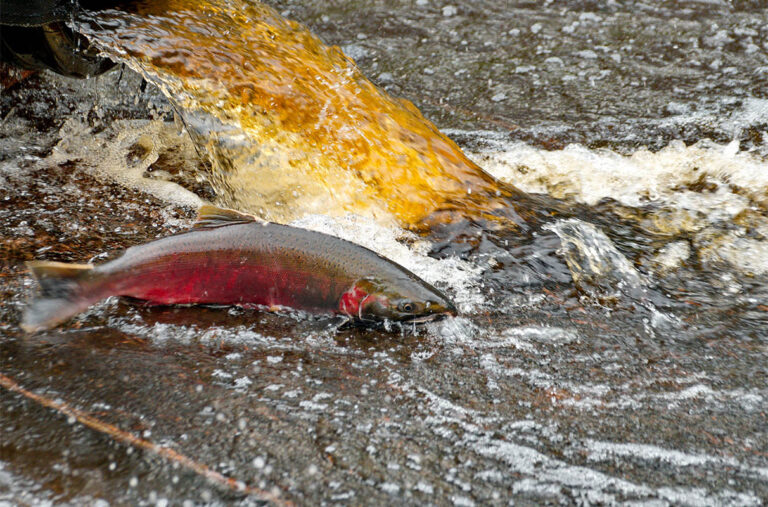A returning Coho Salmon at the Suquamish Tribe’s Grovers Creek Hatchery in Poulsbo, WA. Photo by K. King, USFWS. […]
The pore-like structure of permeable pavements may help protect coho salmon by preventing tire wear particles and related contaminants from entering stormwater runoff, according to a Washington State University study.
Researchers demonstrated that four types of permeable pavements can act as giant filters, retaining more than 96% of applied tire particle mass. They also captured several tire-associated chemicals, resulting in a 68% average reduction of 6PPD-quinone, a contaminant shown to kill coho salmon in urban streams. The study findings were published in the journal Science of the Total Environment.
“The pressure on existing stormwater management technologies is becoming problematic, especially with climate change and increased development,” said lead author Chelsea Mitchell, who recently earned a PhD in environmental and natural resource sciences from WSU. “Permeable pavements are a very promising type of green stormwater infrastructure because they could treat this type of pollution where it’s generated, rather than downstream.”
In 2020, a team led by WSU and University of Washington scientists at the Washington Stormwater Center discovered that 6PPD, a chemical found in tires, transforms into 6PPD-quinone when exposed to ozone or sunlight. Even in small concentrations, 6PPD-quinone is deadly to salmon.
For the latest study, WSU scientists led by Ani Jayakaran, a professor at WSU’s Puyallup Research and Extension Center, worked in an active parking lot at the School of Industrial Design, Engineering and Art in Tacoma, Wash., running a series of tests on four permeable pavements made of either asphalt or concrete. The pavements were created in collaboration with Boeing, which provided research funding, as well as Tacoma Public Schools and the City of Tacoma.
First, the researchers mimicked a rain event by flushing water through the pavements, measuring the background level of existing pollutants. The next day, they deposited ground-up used tire tread across a dosing area. They again simulated a rainstorm, measuring how much of the deposited particles and associated chemicals were retained.
A third water flushing experiment helped the researchers measure the likelihood that 6PPD-quinone and other chemicals would continue leaching off retained tire particles during future rainstorms.
“Permeable pavements make a difference in […]
Full article: news.wsu.edu

